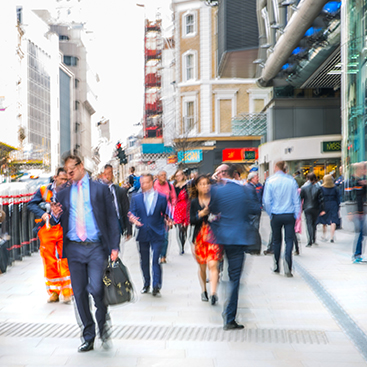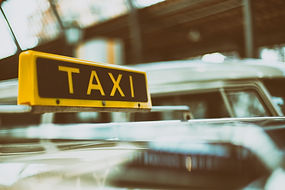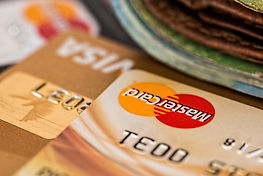Mexico: Cash is king, but not if it’s sterling

Lauren Jones, ex Head of Standards at Payments UK, and now Icon’s International Payments Ambassador, reports from out in the field where she is actively testing different methods of payments and making observations as she works her way around Latin America. Lauren reports on her first impressions from Mexico…
So, in late February 2017 I packed up all my worldly possessions, found a place to store them for the foreseeable future; resigned from my previous job in payments and bought a one way ticket to Mexico to start a life on the road. Prior to me leaving, when telling colleagues within the industry what I was about to embark on, it was greeted with either ‘wow, I’m extremely jealous’ or, ‘you travel enough for work, why wouldn’t you want to continue to travel in some semblance of luxury’. With this is mind and with some trepidation, I took the plunge and have spent the first foray of my adventure travelling the south of Mexico, both the Yucatan and Quintana Roo states. I aim to write a series of blogs that will document the payments landscape as I travel the world, and will hopefully enlighten how our industry works in other, maybe less documented communities.
The power of the dollar
When I arrived in Mexico, my first stop was Cancun, not necessarily a backpackers paradise. The high rise hotels and resorts are geared more towards two-week holiday tourists with money to spend or US Spring Breakers. However, because the flight was a reasonable cost and I thought it may ease me into the travelling lifestyle, I spent a few days just outside of the main tourist hotel areas.
In Cancun, the green paper is king. This is true all over Mexico, but in this extremely American tourist destination, where at times it seems there are more Americans than Mexicans, George Washington and his pals are just as common as the Peso. The US Dollar is accepted pretty much everywhere and you see lines of Mexicans at the bank changing up large sums of Dollars that they have either been paid as an owner of a business or have been tipped by their customers.
Having arrived in Mexico not too long after Donald Trump’s inauguration, various large multinational organisations had stated publicly that they would not invest in Mexico and with a record low of the Mexican Peso versus the Dollar, it is not too difficult to see why the Dollar would come in handy for Mexicans. Whilst cash seemed to me the most popular form of payment throughout my time in Mexico, Cancun, as you would expect from a tourist destination, has a large acceptance of plastic cards, including Amex. Having done some research prior to my leaving on which credit card to opt for when travelling, I steered clear of Amex as it was said that there was very little acceptance of Amex cards in Latin America. This was not the case in Cancun. However, for the most part I tended to opt for cash for day to day purchases and only used card for accommodation and larger expenses. I imagine if being on holiday, this might be slightly different. Whilst card terminals are prevalent, even in small shops, this has not yet transferred to other innovations, such as taxi payments. Cash is still the only method here.

In the UK, we have seen a surge in innovations such as AirBnb, Uber and Deliveroo. This has been the subject of too many conference panels to mention. AirBnb has a strong presence in Mexico and Uber does in the bigger cities. Also, some parts of Mexico has its own equivalent of Deliveroo with a fully integrated payment check-out service.
Card payment? Maybe not
After Cancun, I moved on to Tulum, to the south. This is a far smaller town, but still has a large tourist attraction. The card usage facilities dwindled and it became much harder to find locations that would accept plastic. Mexicans tend to trust cash more than other innovative payment methods. For a country that has a high percentage of mobile phone penetration, this has not seemed to have made too much of an impact outside of larger, more cosmopolitan areas, from what I could see. Tulum is split between the town and the coastal hotels which are now popular celebrity hangouts. On the coast card payments are far more popular.

I did find one outlet in the town that accepted card. I decided this would be a good opportunity to try out my prepaid multi-currency card. Despite a large sign, lauding that the establishment took cards, when I presented it to the waiter, he looked totally lost. As if no one had paid by card in the history of the restaurant. I took a fairly substantial hit to use the card machine, but you know what they say, curiosity killed the cat – and it would quite literally kill me if I had to pay that fee every time I used a card! But it was worth it, the card worked like a dream and I received a pretty much like-for-like exchange rate to the market value. That gave me great confidence in using it again. Merida, the capital of the Yucatan state and a population of 970,000 also had strong card usage facilities, with many ATM machines and opportunities to change currency. Again, there were similar services to that of Cancun, with Uber common and other Deliveroo-like apps.
Sterling? I don’t think so
It seems that outside of Cancun there is not a large population of British tourists. In all the other towns and cities I visited, changing Pounds Sterling to Pesos proved somewhat of a challenge and involved me breaking out the pigeon Spanish I learned the best part of a decade ago to muster ‘puedo cambiar libras esterlinas?’ only to receive a look of confusion followed by a mocking laugh and shaking of the head on more than one occasion. Only US Dollars and Euros. This is fine when you are in a town that has a more extensive range of bureau de change facilities (and by bureau de change I mean someone that is peddling currency from a hole in the wall), however when there is only one in the town and you have run out of pesos this can be somewhat frustrating. This is where a credit card with no international transaction and withdrawal costs will save you! After being laughed at for even considering Pounds was a currency worth dealing with, I trotted off to the ATM machine, fairly smug that I had the foresight to get a new credit card, even if not the foresight to know that Pounds was a dirty word.
There are three ATM machines in Bacalar, a small town on a lake on the border with Belize. At this moment in time, two of the machines were broken, and standing in the kind of queue you would see at a theme park during the school holidays, in the midday heat, I wished that the cash king was dead and that plastic would reign.
 Here, there was little to no card acceptance, except in tourist restaurants and the more upscale hotels. Most other establishments, including hostels will not accept cards.
Here, there was little to no card acceptance, except in tourist restaurants and the more upscale hotels. Most other establishments, including hostels will not accept cards.
Cash is still very much the head of the payments family here in Mexico. This is true right up until the moment you leave. Upon arriving at the Mexico-Belize border, the border patrol ask you to pay for the privilege of leaving the country. A total of MXN 500*, in cash. I wonder if cash will reign as I move south…